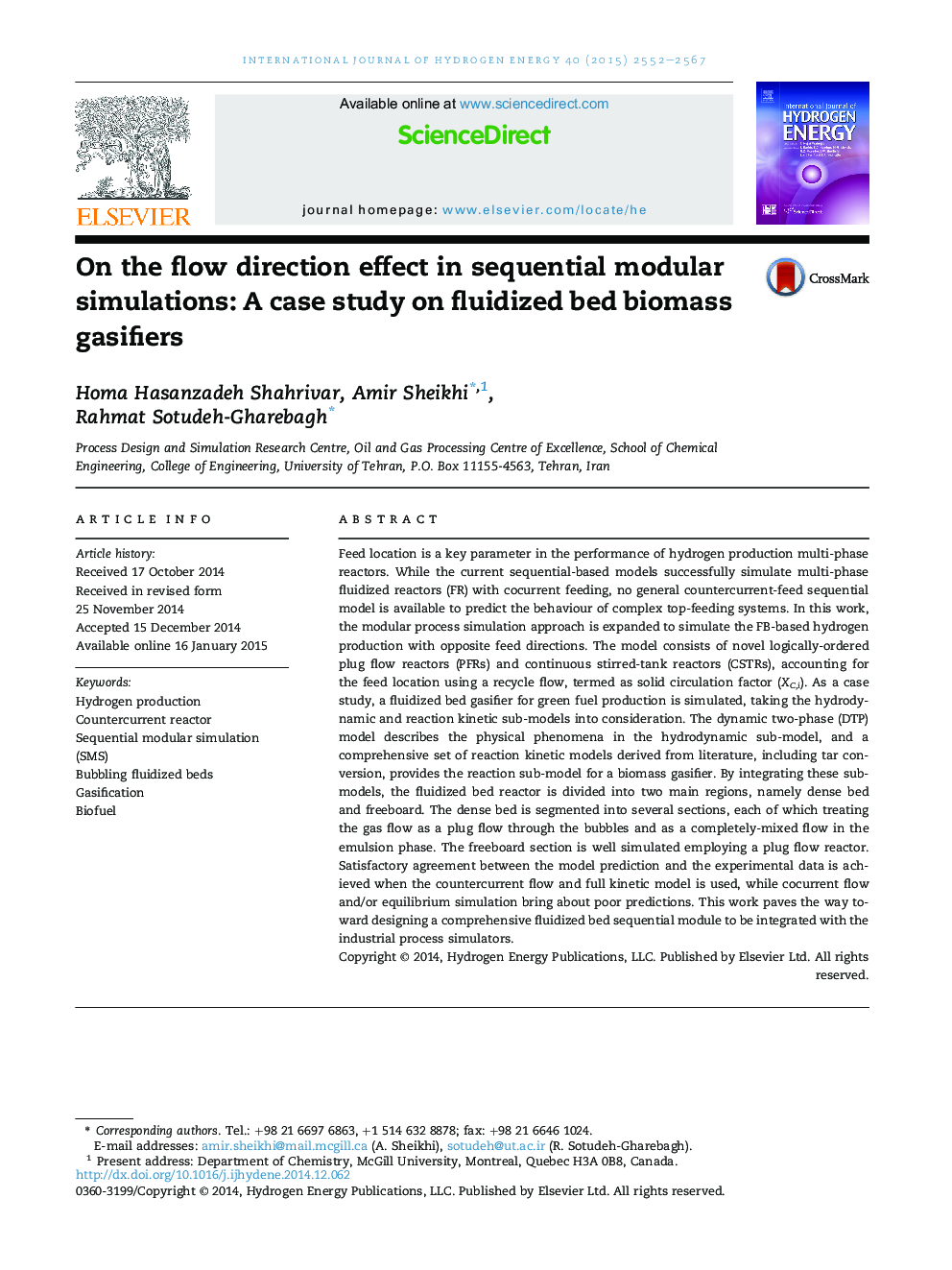| کد مقاله | کد نشریه | سال انتشار | مقاله انگلیسی | نسخه تمام متن |
|---|---|---|---|---|
| 1270021 | 1497467 | 2015 | 16 صفحه PDF | دانلود رایگان |
• Sequential modular simulation (SMS) for hydrogen production in complex multiphase systems is developed.
• Cocurrent and countercurrent simulations are introduced within the SMS platform.
• Novel countercurrent SMS predicts the behaviour of a hydrogen production fluidized bed gasifier successfully.
Feed location is a key parameter in the performance of hydrogen production multi-phase reactors. While the current sequential-based models successfully simulate multi-phase fluidized reactors (FR) with cocurrent feeding, no general countercurrent-feed sequential model is available to predict the behaviour of complex top-feeding systems. In this work, the modular process simulation approach is expanded to simulate the FB-based hydrogen production with opposite feed directions. The model consists of novel logically-ordered plug flow reactors (PFRs) and continuous stirred-tank reactors (CSTRs), accounting for the feed location using a recycle flow, termed as solid circulation factor (XC,i). As a case study, a fluidized bed gasifier for green fuel production is simulated, taking the hydrodynamic and reaction kinetic sub-models into consideration. The dynamic two-phase (DTP) model describes the physical phenomena in the hydrodynamic sub-model, and a comprehensive set of reaction kinetic models derived from literature, including tar conversion, provides the reaction sub-model for a biomass gasifier. By integrating these sub-models, the fluidized bed reactor is divided into two main regions, namely dense bed and freeboard. The dense bed is segmented into several sections, each of which treating the gas flow as a plug flow through the bubbles and as a completely-mixed flow in the emulsion phase. The freeboard section is well simulated employing a plug flow reactor. Satisfactory agreement between the model prediction and the experimental data is achieved when the countercurrent flow and full kinetic model is used, while cocurrent flow and/or equilibrium simulation bring about poor predictions. This work paves the way toward designing a comprehensive fluidized bed sequential module to be integrated with the industrial process simulators.
Figure optionsDownload as PowerPoint slide
Journal: International Journal of Hydrogen Energy - Volume 40, Issue 6, 19 February 2015, Pages 2552–2567
